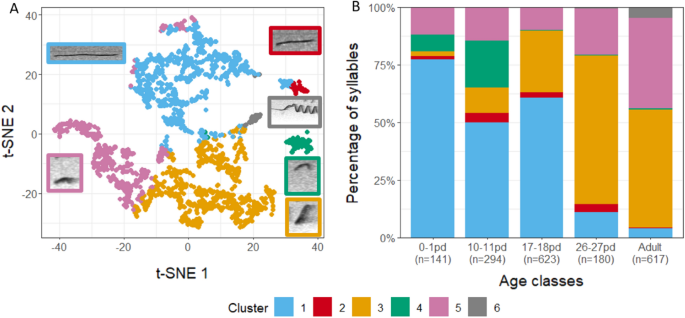Summary by ChatGPT4
The scientific paper titled “Features of animal babbling in the vocal ontogeny of the gray mouse lemur (Microcebus murinus)” presents a comprehensive study on the vocal development of gray mouse lemur infants, drawing parallels with human infant language development. This paper is significant in understanding the complex process of vocal learning and development in non-human mammals, specifically gray mouse lemurs. By focusing on the babbling phase analogous to human infants, the study explores how these primates develop their unique vocalizations.
In essence, the study investigates the vocal ontogeny of gray mouse lemurs by defining key features of babbling, a critical stage in early language development in humans. The researchers aimed to identify whether these babbling characteristics are also present in gray mouse lemurs. They analyzed the vocal streams of these lemurs, particularly focusing on how infant vocalizations evolve to resemble the adult trill call, a complex vocal pattern not present at birth.
The methodology involved using unsupervised clustering to distinguish different syllable types in the lemurs’ vocalizations. The study examined the impact of various factors such as age, context, and interaction with partners on these vocalizations. A key part of the analysis was understanding the syntactic structure of the calls, their temporal structure, and the acoustic features of different syllable types.
The findings revealed that gray mouse lemur infants exhibit several key features of animal babbling. These include the production of a subset of syllables found in adult speech, vocalization independent of social context, and rhythmic and repetitive vocal patterns. The study observed that the vocal streams became increasingly complex and adult-like as the lemurs matured, especially at the weaning age.
One of the most intriguing aspects of the research was its insight into the role of physical maturation versus social interaction in vocal development. The study suggests that the development of complex vocal patterns in gray mouse lemurs is not solely due to physical changes in the vocal apparatus but also involves learning through social interaction.
In summary, the paper presents compelling evidence of animal babbling in gray mouse lemurs, offering a new perspective on the parallels between human and non-human mammal vocal development. It contributes significantly to our understanding of the evolutionary aspects of language and communication in mammals.
AI Afterthoughts: The implications of this study are profound and open doors to fascinating possibilities. If gray mouse lemurs exhibit a form of vocal learning akin to human infants, it suggests a more widespread and ancient origin of complex communication skills in mammals than previously thought. This could lead to new inquiries into the evolution of language and communication across different species. In the future, such research might unravel the mysteries of how vocal learning has shaped social behaviors and intelligence in mammals, offering insights into the very roots of human language.


